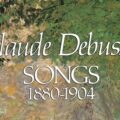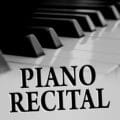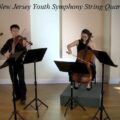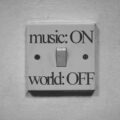Apr 25, 2023
Guest Blogger: John Wargacki
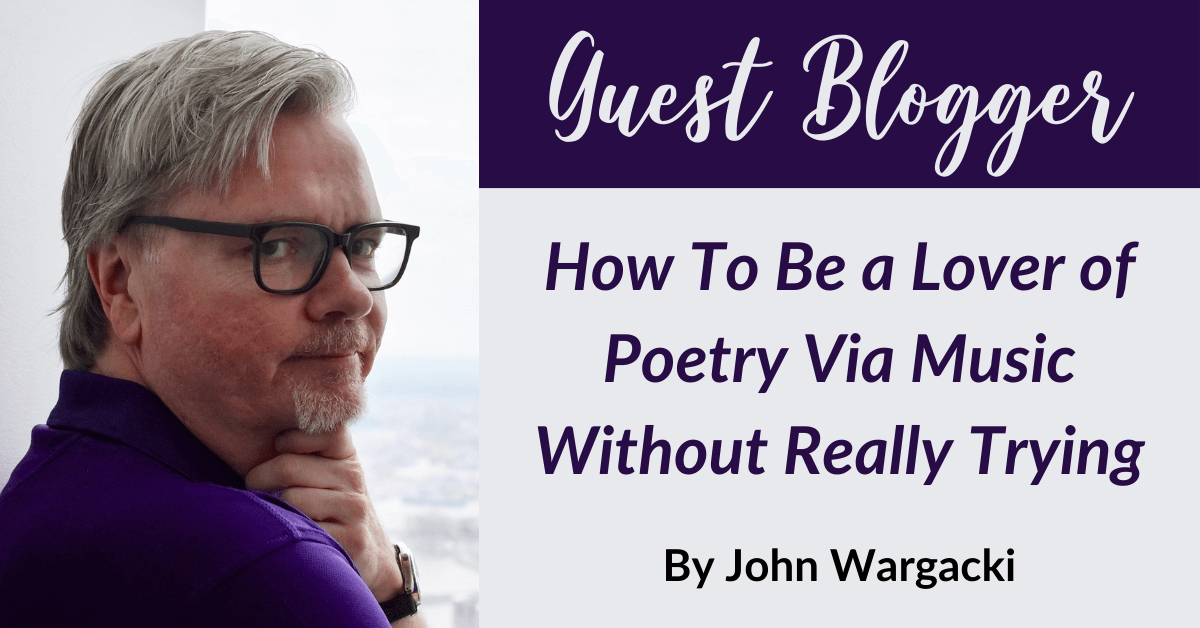
How To Be a Lover of Poetry Via Music Without Really Trying
Music is then the knowledge of that which relates to
love in harmony and system.
— Plato
Having taught college English, American literature, and composition over many years, it’s never surprising to see how students tense up when we come to poetry. In first-year writing, it typically takes up an entire unit between the drama and fiction, and students buckle up.
As a lifelong lover of both poetry and music of all sorts, I’ve developed ways to assuage this apprehension with an introductory exercise that asks students to list their favorite popular songs from any style and then copy a few lyrics from memory. Not surprisingly, most students find this a rather easy task, which leads me to the following remark:
“See, you’re ALL lovers of poetry! Those lyrics you know by heart are really just cool poems set to music.”
Once demystified as obscure, unreadable, or hard-to-solve puzzles, the integral connection between the poetry and the music we love becomes an easy sell. By then, it’s not long before they see why Shakespeare’s sonnets so often get set to music, or how Charles Albert Tindley’s original hymn inspired the anthem “We Shall Overcome”. In fact, as disparate as those two examples may seem at first glance, they share a common aesthetic dynamic: music and poetry are intrinsically tethered while an integral feature of distinguishing poetry from prose is its “meter”. No wonder poems of all sorts so often inspire musical compositions from the Psalms of the Bible to Voltaire’s Candide; while the lyrics of countless songs can stand alone as fine poems even separated from their musical setting (such as “The Girl from Ipanema” or Stevie Wonder’s “Overjoyed”).
For many years now, I’ve been invited by our directors of First-Year Writing at Seton Hall to speak to graduate assistants, all of whom teach first-year English, about creative ways of incorporating these ideas into their lesson plans for that scary “Introduction to Poetry” unit.
Back in the day when I taught first-year writing and literature rather frequently, I’d begin by reading the anonymous Medieval love ballad, “Barbara Allan” then listen to any number of musical versions that can be traced to as far back as the 16th century. Next, we’d check out Joan Baez’s entirely original revision with the same lyrics from 1960. Another ‘go-to’ is “The Waters of March,” that Brazilian Bossa Nova “Águas de março” by Antônio Carlos Jobim, with its countless covers in multiple languages, including Art Garfunkel’s hip version from 1975.
Take a look at this sonnet about music written in 1928:
I am in need of music that would flow
Over my fretful, feeling fingertips,
Over my bitter-tainted, trembling lips,
With melody, deep, clear, and liquid-slow.
Oh, for the healing swaying, old and low,
Of some song sung to rest the tired dead,
A song to fall like water on my head,
And over quivering limbs, dream flushed to glow!
There is a magic made by melody:
A spell of rest, and quiet breath, and cool
Heart, that sinks through fading colors deep
To the subaqueous stillness of the sea,
And floats forever in a moon-green pool,
Held in the arms of rhythm and of sleep.
This was written by the great Elizabeth Bishop the year she turned 17, and you don’t need to know much about poetry or literature to sense her genius in the making. Or, as I like to say: “We can see she’s got ‘stuff’” — not very technical, but sports fans know exactly what I mean.
Well, when I featured Elizabeth’s sonnet on my “Daily Poem” thread, jazz artist and composer Dan Crisci was inspired toward his piano, recalling:
In the middle of March, 2020, things were just starting to close down because of the Covid 19 pandemic. I was sitting at my computer and saw an email from John Wargacki, and one of the early poems that he sent in his poetry thread. The poem by Elizabeth Bishop had a title that any musician (and many others as well) would agree with, “I Am In Need Of Music”.
Like everybody else, everything in my life had just stopped. No more piano lessons, no more gigs, no more driving kids to school, no more going out to church on Sundays, no more going anywhere. Being in this STOP mode certainly gave me time to stop and look at the poem.
Since it was a poem about music, I casually thought that maybe the poem should be put to music, so I sat there and sang a phrase to fit the first line of the poem. I liked the phrase I sang. There seemed to be a nice rhythm that came from the words. I then more than casually thought that I should pursue this newfound project, and I did. I moved to the piano and developed the rest of the melody, rhythm, and chords, guided by the words of the poem. I’m sure I tinkered with it for a few days, as I usually do, and ultimately, I had a piece of music.
Few mediums among the arts share such an intimate connection, and Dan’s story about this sonnet and his song illustrate that perfectly.
Oh, remember that epigraph by Plato? “Music is then the knowledge of that which relates to love in harmony and system.” What a marvelous intersection of philosophy, poetry, and prose — one that I think makes a lot more sense now than it did up front…! 😊
John teaches American Literature at Seton Hall University, specializing in later 19th & early 20th century poetry. He has published scholarly articles on Walt Whitman, Emily Dickinson, Hart Crane, Wallace Stevens, Robert Frost, and Langston Hughes, and is currently completing a book on American poetry and belief with McFarland & Company Publishers. John is also a member of The Discovery Orchestra’s Board of Trustees.

